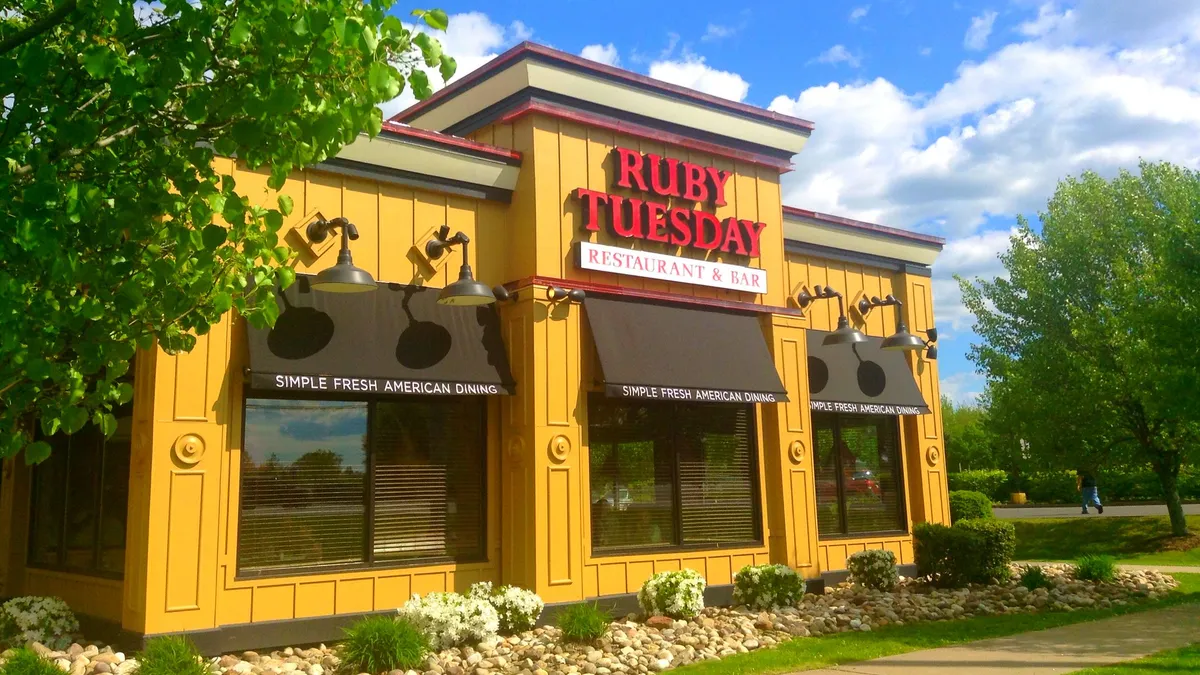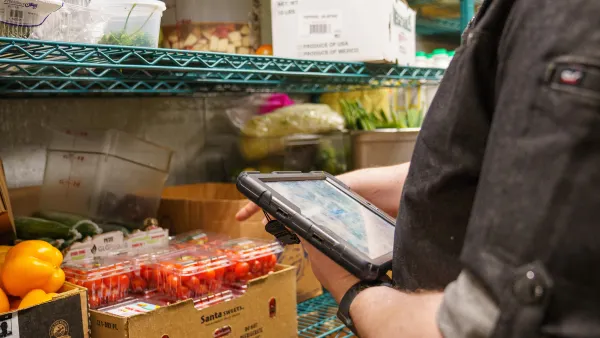UPDATE: Feb. 25, 2021: Ruby Tuesday announced Wednesday that it has emerged from Chapter 11 bankruptcy protection. The bankruptcy allowed the casual chain to "shed liabilities, including leases from closed locations that were significantly impacted by COVID-19, and to strengthen its core business of 209 corporate-owned and operated locations," according to a company release.
Now, Ruby Tuesday plans to continue developing virtual, delivery-only brands to leverage its growing off-premise business and support its long-term growth plans.
Dive Brief:
- Ruby Tuesday announced Wednesday it has filed for Chapter 11 bankruptcy, according to a press release. The restaurant previously came to an agreement with its secured lenders to support its restructuring through financing, and the company plans to reduce liabilities "and emerge a stronger organization built for the future." Liabilities are between $100 million and $500 million, according to the chain's Delaware bankruptcy filing.
- The casual chain's restaurant will continue to operate as normal during this transition. "This announcement does not mean 'Goodbye, Ruby Tuesday'. Today's actions will allow us an opportunity to reposition the company for long-term stability as we recover from the unprecedented impact of COVID-19," Shawn Lederman, Ruby Tuesday's CEO, said. "Our restructuring demonstrates a commitment to Ruby Tuesday's future viability as we work to preserve thousands of team member jobs."
- This bankruptcy follows a tumultuous few months for the struggling restaurant chain. This summer, Ruby Tuesday reportedly stopped paying pensions for more than 100 employees without informing them before declaring insolvency in September. The chain has also reportedly closed locations this year without alerting impacted employees. As of August, the company shuttered 150 restaurants restaurants, despite receiving a Payment Protection Program loan.
Dive Insight:
Ruby Tuesday's attempt to steer its finances back in the right direction will be challenging, given dining room restrictions are still in place across the majority of the country. The company joins a growing cohort of casual chains that have declared bankruptcy during the pandemic, including Sizzler, California Pizza Kitchen and Chuck E. Cheese parent CEC Entertainment.
The fact that the casual chain hasn't kept employees in the loop as its shuttered stores and skipped pension payments also suggests a level of chaos behind the scenes that could be difficult to recover from, even with lender backing. The chain has also closed approximately 200 restaurants in the past couple of years, with only roughly 300 global locations remaining, according to CNN — a trend that could continue as the pandemic stretches on.
Diner perception of the Ruby Tuesday brand was already lackluster before COVID-19 disruption, too. According to an American Customer Satisfaction Index Restaurant Report 2019-2020 released in June, the chain was among the lowest scoring casual restaurants, and its score declined 3%.
This scoring may reflect a more general diner disinterest in Ruby Tuesday's style of casual dining, an issue that wouldn't be helped by financial restructuring. But the chain has worked to bolster its brand halo during the coronavirus crisis, allowing diners to donate meals to Ruby Tuesday employees in need and selling items from its pantry to consumers. The company also partnered with Nation's Famous in July to sell hot dogs out of its kitchens for delivery only to try and boost revenue. It's unclear if these measures will be top of mind for diners, however, since restaurants big and small have rolled out similar initiatives to aid their communities since early this spring.













